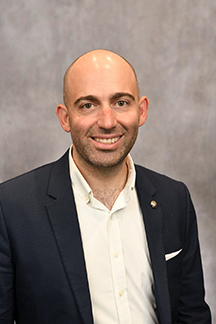Modeling Water, Plastics, and Microplastics
Jason Davison
School of Engineering
Civil Engineering, The Catholic University of America
Wed, December 7, 2022 - 4:00 PM
Karl Herzfeld Auditorium of Hannan Hall - Rm 108
 Microplastics are found persisting in systems throughout the world resulting in prohibitive environmental remediation costs. Attempts to clean up marine plastic waste at sea are seemingly futile and as such, there has been a recent shift in research to address the issue at its land-based source. This work demonstrates the viability of using a particle tracking model coupled to parameter estimation software to predict the sources of plastic waste within the Anacostia watershed. The software was tested on both a slab slope model and a more complex test watershed to calculate numerical accuracy and precision. This increase in complexity should decrease the relative error of model predictions, bolstering the overall usage of the software package. Additionally, this work will present a cloud-based object detection algorithm software package that calculates the quantity of floating plastics on a larger scale. This software is paired with our source location identification program as a novel predictor for plastic waste origins. The resulting source location predictions can be used to inform proper plastic waste management, and prioritize waste remediation in favor of mitigation efforts
Microplastics are found persisting in systems throughout the world resulting in prohibitive environmental remediation costs. Attempts to clean up marine plastic waste at sea are seemingly futile and as such, there has been a recent shift in research to address the issue at its land-based source. This work demonstrates the viability of using a particle tracking model coupled to parameter estimation software to predict the sources of plastic waste within the Anacostia watershed. The software was tested on both a slab slope model and a more complex test watershed to calculate numerical accuracy and precision. This increase in complexity should decrease the relative error of model predictions, bolstering the overall usage of the software package. Additionally, this work will present a cloud-based object detection algorithm software package that calculates the quantity of floating plastics on a larger scale. This software is paired with our source location identification program as a novel predictor for plastic waste origins. The resulting source location predictions can be used to inform proper plastic waste management, and prioritize waste remediation in favor of mitigation efforts
Refreshments served at 3:45 PM
If you have any questions about the Colloquium Series or would like to make a donation please contact the Physics Department, cua-physics@cua.edu or (202) 319-5315.
